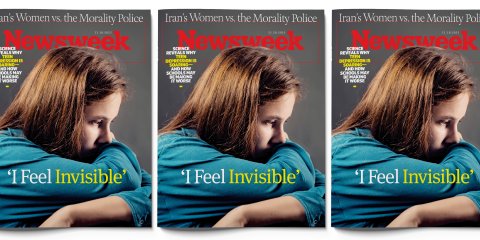
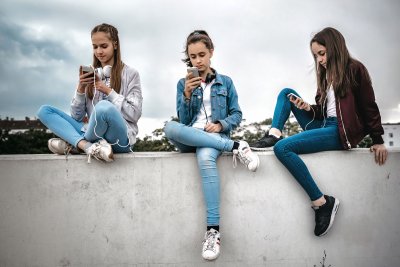
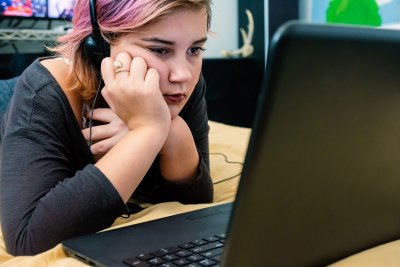
A Loneliness Epidemic
U.S. Surgeon General Dr. Vivek Murthy got a feeling for the state of teen mental health during his first term serving as the nation's top doctor, during the Obama administration. Meeting with small groups of students in 2014 and 2015, he listened with mounting alarm as teenagers shared their experiences. "I feel like if I disappeared tomorrow, no one would notice," one told him. "Nobody really gets me," he heard from others. "I feel invisible." Murthy soon came to believe that a widespread sense of alienation was a key factor driving sky-high rates of depression, anxiety and suicide."When I would proactively raise issues around loneliness or isolation in conversation during these town halls and small group discussions, it's almost like the floodgates open," Murthy recalls. "My concern has been growing that this is a profound challenge that we face—that it is in fact foundational." Since then, more studies have confirmed that loneliness is not only common but also consequential for people's mental health and physical health. Teenagers who are lonely are more likely to feel depressed, anxious and suicidal; they even feel pain more acutely. (For older adults, loneliness is associated with an increased risk of heart disease, cancer and early death).
Antidepressants Work Better Than Sugar Pills Only 15 Percent of the Time
Joseph Allen, a clinical psychologist and psychology professor at the University of Virginia who specializes in adolescent social development, compares it to malnutrition. "Teens are primed for social connection," he says. "It is the period of life where one learns how to form deep connections that are going to matter for everything from romantic relationships, to work with colleagues, to friendships in adulthood. And when they're deprived of it—and COVID is an extreme example of that—it's like watching a child go through a growth spurt without getting any protein in their diet. If they're not getting what they need, it's not a pretty picture. It doesn't end well."
One factor that contributed to skyrocketing rates of depression and anxiety among teenagers, says Allen, is the introduction of the iPhone and the rise of social media, which took off around 2009 and 2010. "It's given young people a way of being socially involved," he notes, "but that is lacking in depth for the most part. It doesn't give them what they need. It can't replace the real thing."
The research of Kay Tye, a neuroscientist at the Salk Institute for Biological Sciences, who studies the neuroscience of loneliness, confirms that the perception of social exclusion is a driver in loneliness and isolation, which she has found is a physiological state that can be observed with brain imaging. Social media, she believes, lacks many of the cues that release the hormone oxytocin when a person makes a social connection with others. Instead, the social media experience largely consists of watching other people interact from afar, passively witnessing them making comments and responding without any real-time feedback. The medium, she suggests, replicates the feeling of exclusion, even when a teenager is not being actively excluded from a group on social media.
"You don't get eye contact," she says. "You don't get any sort of touching. You can't even laugh together. So there's no brain-synchrony connection. There's only the feeling that you're missing out. There's only the social exclusion. Social media is almost a misnomer. It's amplifying social deficits and providing very, very few of the benefits. The types of interactions that benefit our health and that let our systems know that we are getting social contact that's positive are missing from social media."
School reforms have compounded these effects. In previous generations, schools usually provided some sense of connection. But the nature of school has fundamentally changed in recent years in a way that contributes to the spike in mental health issues like depression and anxiety and suicidal tendences, says Karen Pittman, cofounder of the Forum for Youth Investment, a nonprofit education policy think tank in Washington, D.C. She blames the No Child Left Behind Act, which, starting in 2002, required states receiving federal funding to come up with uniform academic standards and annual testing that measures the ability of schools and teachers to meet those standards. The emphasis on testing took away teacher flexibility and depersonalized school, critics maintain.
In response to No Child Left Behind, she suggests, many schools increased the amount of time spent preparing for tests, imposed rigid requirements on curriculums designed to prepare kids for the test, and cut programs designed to engage students and help them develop social and life skills.
"School used to be heavily focused on those social aspects of school, not to the exclusion of academics, but really making sure young people felt attached enough to school," she says. "They came to school, and they engaged in school. And even if they weren't doing well academically, they still had reasons to come and to try."
Read more
Antidepressants Work Better Than Sugar Pills Only 15 Percent of the Time
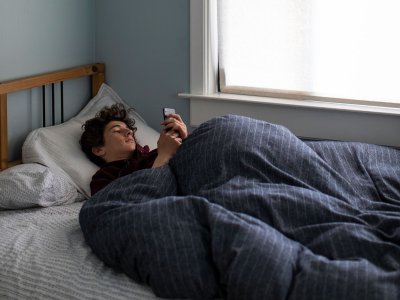


Empathy and the Brain
The changes seen in schools in recent decades are part of a larger problem, says Mary Helen Immordino-Yang, a professor of education, psychology and neuroscience at the University of Southern California. A combination of factors, including an emphasis on rote learning, the rise of helicopter parenting and social media, have served to stifle teenagers. "Teenagers are not just capable of, but are driven to make deep meaning of complex issues and to really be visionary and connected to stuff that is deep, that's about identity, that's about reputation, that's about who I could be," she says. "And we cut them off at the knees. We do not trust our kids nor expect them to manage themself. It's overly scheduling kids and it's telling kids where to sit in class and what to do and when. All these very tight restrictions where everything that counts as achievement is defined by somebody else."Forget Weed, Wine and Xanax: Science Has Better Ways to Treat Anxiety
Immordino-Yang's opinions grew from her own experiences. In the mid 1990s, when she was 23 years old, she taught math and science to teenagers who had recently immigrated to the U.S. She became fascinated by how much easier it was to teach students who were driven to make sense of their new country and their place in it and who recognized that the concepts she was introducing would help them understand the world around them and their place in it. She went back to school and got a Ph.D. in the neuroscience of teen learning and identity.Read more
Forget Weed, Wine and Xanax: Science Has Better Ways to Treat Anxiety
In her lab, Immordino-Yang has scanned the brains of scores of teenagers. She has identified signature neural patterns and ways of thinking, learning and relating to the world that are associated not just with greater neural development but with better outcomes in mental health years down the line. In one particularly insightful study, she had teenagers watch a series of short documentary stories about other teenagers, including Malala Yousafzai, the Nobel Prize winning Pakistani education activist who fought back after the Taliban took over her town and banned girls from attending school. Then they climbed into a brain scanner and were asked to indicate how emotionally engaged they were by the story and how meaningful it was to them. When moved to emotion by a video clip about another teenager, students tended to toggle between two different networks of the brain. The first network was associated solely with feelings of empathy and involved parts of the brain involved in outward-directed attention. The second network involved parts of the brain associated with daydreaming, complex conceptual thinking, identity and meaning, a network of structures known as the default mode network. This part of the brain lit up when the students were doing what Immordino-Yang calls "meaning making": connecting the story to their own experiences, their conception of the world,and their place within it. When Immordino-Yang studied these students again several years later, she realized how important social and emotional learning can be to schooling.
When she rescanned their brains after a hiatus of several years, she found that the more a particular individual's brain had toggled back and forth between the two networks in the original experiment, the more they did so years later while daydreaming in the scanners, suggesting the early tendency had led to greater brain development in subsequent years. More important, this skill was predictive of how the individual scored on a wide array of metrics that touched on self-esteem, relationships, work, school and how happy they were as young adults. What this means, Immordino-Yang thinks, is that this ability to toggle between the two brain networks is indicative of a person's ability to find meaning in the world around them. The work has important implications about teaching and learning. Social and emotional development is traditionally thought to be largely separate from cognitive development—doing math is cognitive, having a friend is social, being depressed is emotional. But Immordino-Yang's research shows that these are false dichotomies: social, emotional and cognitive activities are all of a piece. "In the brain what we're learning is that these big network dynamics undergird all of it," she says. "And you can't make real distinctions between social, emotional and cognitive." What works best in an educational setting, she says, are approaches in which the social, cultural, emotional, cognitive aspects of the learning are integrated. This happens through project based learning, involving interactions with other students, and "experiential kinds of discussions where people are delving on their own into what matters or they're learning how to care about stuff that they hadn't cared about before. " Even an algebra class can be an opportunity for social emotional learning. Students working collaboratively in teams to solve a complex math problem, for instance, have to engage with others, listen to one another's perspectives and deal with any frustration that arises. "One of the things we hear time and time again, especially from our educators, is that sometimes kids become so frustrated that they completely shut down," says Aaliyah A. Samuel, president and CEO of the Collaborative for Academic, Social, and Emotional Learning (CASEL), a nonpartisan nonprofit that serves as a clearinghouse for more than 80 SEL programs. "Imagine if not only the educators, but the kids, had the skills to say, 'I'm feeling really overwhelmed or frustrated by this problem, and rather than giving up, I'm going to talk through my areas of a frustration, identify where they are and then get the support to be able to persist and work through that.' Persistence is part of the social emotional learning skills."
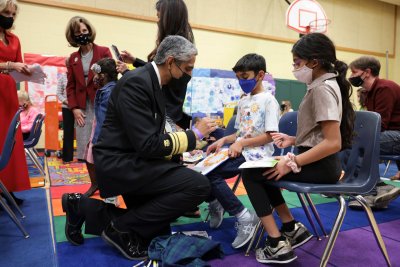
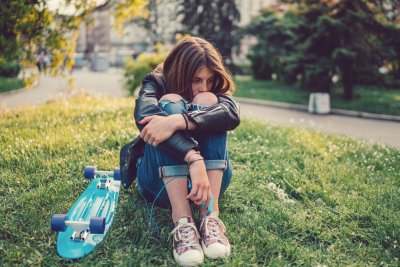
Connecting With Students
The term "social and emotional learning" was coined at CASEL 30 years ago. It gained traction among some NGOs and youth agencies and in early childhood education after the 1995 publication of psychologist Daniel Goleman's book, Emotional Intelligence, which emphasized the importance of skills besides simply the intellectual. Over the past decade, official adoption of SEL has exploded in school districts. By 2021, about 68 percent of the nation's 14,000 school districts had adopted some form of SEL curriculum, while about 27 states had adopted kindergarten through grade 12 SEL standards or competencies. Now, with growing recognition of the teen mental health crisis, SEL has increasingly begun to make its way into high schools. In 2018, 37 percent of secondary school principals said they had adopted some form of SEL. By 2021, that had risen to 70 percent. Most of these programs are limited to school and after-school activities. For instance, UVA's Allen has developed an SEL program, called the Teen Connection Project, to help adolescents who feel isolated. Studies suggest that SEL is particularly helpful for students who are loners and feel they don't have deep connections with any of their friends. According to studies by the CDC, adolescents who say they lack authentic connections to others are significantly more likely to report persistent feelings of sadness or hopelessness (35 percent versus 53 percent), consider suicide (14 percent vs. 26 percent) or attempt suicide (6 percent vs. 12 percent).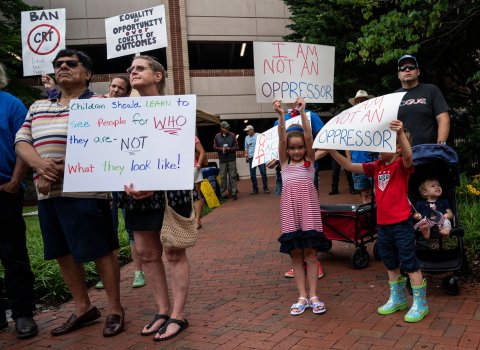
Political Threats
The biggest pushback against the SEL movement has come from the culture wars. The conservative campaign against critical race theory (CRT) has proven to be a potent and motivating political issue in red states ever since the George Floyd protests and the publication The 1619 Project by the New York Times, which suggested slavery and Black contributions played a larger role in U.S. history than previously suggested. There's some disagreement over what role CRT has in high school curriculums, or if it is even taught at all. Although CRT is usually not explicitly mentioned in high school in curriculums, conservative activists and politicians have asserted that it is tucked away, hidden, in some SEL programs. CRT "will be concealed as a number of different things," one article published on the right-wing website The Federalist recently stated. "Most common is something including 'social justice,' 'equity and diversity,' 'multicultural education,' or 'social-emotional learning,' which is the most deceptive because it doesn't sound like it involves race at all!" The sentiment led to widespread protests at school boards around the nation in 2021, though the issue seems to have died down in recent months. In one widely reported instance last year, conservative activists suggested that a school district in northern Georgia, which had assigned an administrator to oversee social and emotional learning, would teach critical race theory. At a school board meeting in May, 2021, so many protestors against CRT showed up that hundreds of people had to stand outside. The board that night approved a resolution banning the teaching of critical race theory and the 1619 project, even though there were no plans to do so in the first place. "Our intentions have been wildly mischaracterized," superintendent Brian Hightower told the crowd. When he said the district planned to move forward with its SEL program to address mental health and rising youth suicide rates, he was booed. One reason questions about racial identity and inclusion have often been associated with the social emotional learning movement is that the ideas first gained popularity in efforts to address the problems in inner-city schools, which are disproportionately Black. CASEL itself was formed to further the ideas pioneered in the late 1960s by Yale researchers who designed programs to turn around New Haven's failing inner-city schools. Many of its early beneficiaries were students of color, for whom the experience of racism was ever present, and who felt alienated from a curriculum that did not include people who looked like them. CASEL officials emphasize that education is local and that there are a wide variety of curriculums to choose from, which can be tailored to local goals. "SEL is not a one-size-fits-all approach," says Samuel. "It should not be. Education is a local control issue for a reason. And the same should be with the selection of social emotional learning programs. Because what works in one community, in one school and for one family may not work for another." Advocates caution that SEL is no easy fix for the mental health crisis. It will take all levels of society working together. In the age of COVID-19 and widespread social media use, there is no "easy panacea," says Justina Schlund, CASEL's Senior Director of Content & Field Learning. Even Tacoma, with its aggressive "wrap around" approach, is struggling. The district still has a high population of homeless students, poverty rates remain stubborn and the murder rate has ballooned. "We're battling just like everyone else," Garcia told Newsweek. "By no means are we perfect. But we started way before the pandemic, and when the pandemic hit, we had a greater awareness of the need and had some infrastructures of support to help our kids." Although Tacoma students have improved on statewide tests designed to measure anxiety, the numbers are not as low as school officials would like them to be. Students went from 29 before the pandemic to 21 (on a 42-point scale), and depression went from 28 to 20 (on 60-point scale). But School district officials have been closely tracking the mental health of their students through the pandemic, and at one point found that 72 percent of their 10th grade students were unable to control worrying, and 41 percent reported feeling depressed, says Tacoma's Allen. "We're struggling, and we're doing our best," Allen says. "But when our kids get depressed, when they want to isolate, want to turtle, they want to check out from everything, we pull them in. The more we pull them in, the more we connect, the better they do. It's really the antidote that they need." Another word for those kinds of measures, suggests Pittman of the Forum for Youth Investment, is what used to be known, in the days before No Child Left Behind, simply as "good teaching."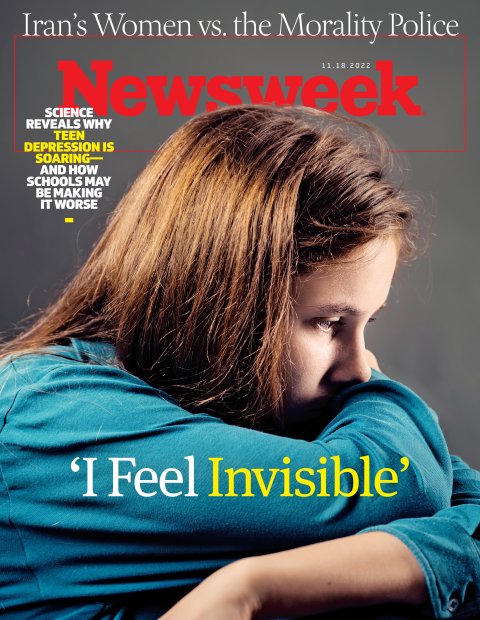
Request Reprint & Licensing
Submit Correction
View Editorial Guidelines
To read how Newsweek uses AI as a newsroom tool, Click here.


